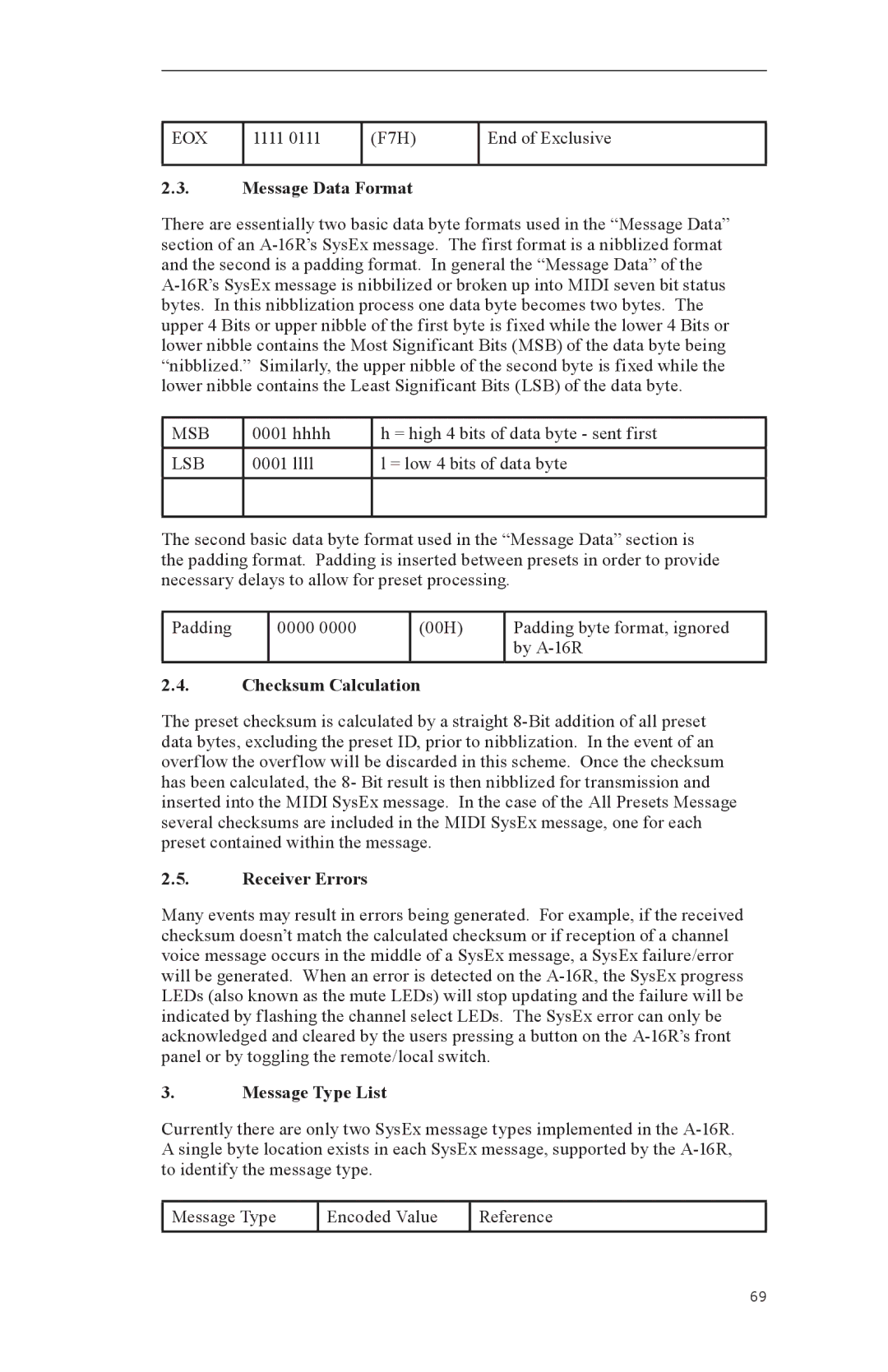2.3.Message Data Format
There are essentially two basic data byte formats used in the “Message Data” section of an A-16R’s SysEx message. The first format is a nibblized format and the second is a padding format. In general the “Message Data” of the A-16R’s SysEx message is nibbilized or broken up into MIDI seven bit status bytes. In this nibblization process one data byte becomes two bytes. The upper 4 Bits or upper nibble of the first byte is fixed while the lower 4 Bits or lower nibble contains the Most Significant Bits (MSB) of the data byte being “nibblized.” Similarly, the upper nibble of the second byte is fixed while the lower nibble contains the Least Significant Bits (LSB) of the data byte.
MSB | 0001 hhhh | h = high 4 bits of data byte - sent first |
| | |
LSB | 0001 llll | l = low 4 bits of data byte |
| | |
| | |
The second basic data byte format used in the “Message Data” section is the padding format. Padding is inserted between presets in order to provide necessary delays to allow for preset processing.
Padding byte format, ignored by A-16R
2.4.Checksum Calculation
The preset checksum is calculated by a straight 8-Bit addition of all preset data bytes, excluding the preset ID, prior to nibblization. In the event of an overflow the overflow will be discarded in this scheme. Once the checksum has been calculated, the 8- Bit result is then nibblized for transmission and inserted into the MIDI SysEx message. In the case of the All Presets Message several checksums are included in the MIDI SysEx message, one for each preset contained within the message.
2.5.Receiver Errors
Many events may result in errors being generated. For example, if the received checksum doesn’t match the calculated checksum or if reception of a channel voice message occurs in the middle of a SysEx message, a SysEx failure/error will be generated. When an error is detected on the A-16R, the SysEx progress LEDs (also known as the mute LEDs) will stop updating and the failure will be indicated by flashing the channel select LEDs. The SysEx error can only be acknowledged and cleared by the users pressing a button on the A-16R’s front panel or by toggling the remote/local switch.
3.Message Type List
Currently there are only two SysEx message types implemented in the A-16R. A single byte location exists in each SysEx message, supported by the A-16R, to identify the message type.

